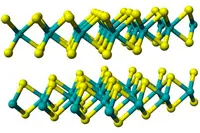 Researchers at the University of Rochester in the US have shown that defects on an atomically thin semiconductor can produce single photons and say the approach could find application in integrated photonics.
Researchers at the University of Rochester in the US have shown that defects on an atomically thin semiconductor can produce single photons and say the approach could find application in integrated photonics.
In a paper, the Rochester researchers describe how tungsten diselenide can serve as a platform for solid state quantum dots that do not inhibit the electrical or optical performance of the semiconductor and which can be controlled by applying electric and magnetic fields.
"We start with a black crystal and then peel layers off until we have an extremely thin later left; an atomically thin sheet of tungsten diselenide," said assistant professor of optics Nick Vamivakas.
The researchers took two of these sheets and laid one over the other. At the point where they overlap, a defect is created in the otherwise smooth 2D sheet of semiconductor material. These extremely thin layers are said by the team to be much easier to integrate with other electronics.
Vamivakas said the brightness of the quantum dot emission can be controlled by applying a voltage and noted the next step is to use voltage to 'tune' the colour of the emitted photons.
A key advantage is how much easier it is to create quantum dots in atomically thin tungsten diselenide compared to producing quantum dots in more traditional materials like indium arsenide.
The quantum dots in tungsten diselenide also possess electron spin, said by the team to be a desirable property as it can act as a store of quantum information and provide a probe of the local quantum dot environment.
Author
Graham Pitcher
Source: www.newelectronics.co.uk

